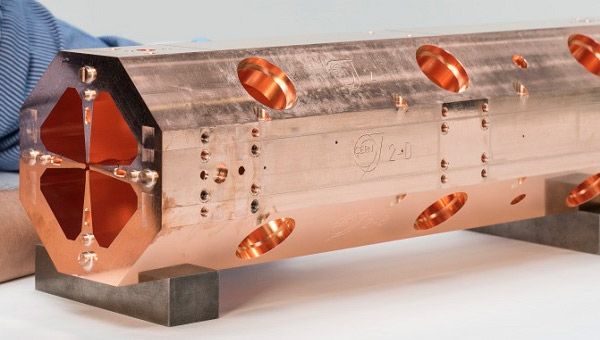New publications
The particle gas pedal will be used in medicine
Last reviewed: 02.07.2025

All iLive content is medically reviewed or fact checked to ensure as much factual accuracy as possible.
We have strict sourcing guidelines and only link to reputable media sites, academic research institutions and, whenever possible, medically peer reviewed studies. Note that the numbers in parentheses ([1], [2], etc.) are clickable links to these studies.
If you feel that any of our content is inaccurate, out-of-date, or otherwise questionable, please select it and press Ctrl + Enter.
The Large Hadron Collider is used to study particles and their mechanisms of action, but a number of experts believe that such a device can be used in medicine or industry, but its enormous size does not allow this (the length of the main ring is more than 26 thousand meters). But this is not the only particle accelerator in the world; more than a dozen trial designs have been created.
CERN specialists, using their experience in creating similar devices, have already begun to manufacture a trial model of a small particle accelerator, which will be about 2 m long and can easily be used in medicine or industry (due to its small length, such a device can be built into equipment).
The mini-Linac (that's what the specialists called their development) was based on the design of the larger Linac4 accelerator, which is planned to be launched only in 5 years. Linac4 is part of a larger complex and is necessary for accelerating hydrogen particles to high energies.
Mini-Linac is assembled according to a scheme that is often used to create such devices. The specialists used the scheme of a radio-frequency radio pole (an important part of any particle accelerator that produces high-power beams). In the new accelerator model, the developers decided to double the operating frequency, due to which the dimensions were reduced. A new approach to the use of beam dynamics, radio frequency, etc. was also used.
The industrial particle accelerator consists of small (50 cm) modules that are already fully assembled. As noted by specialists, the operating frequency of the new device is 750 MHz, it will produce beams of protons and ions with a relatively low speed and intensity, the energy of the beams will be approximately 5 MeV.

The developers believe that such a device will be suitable for working with more powerful particle accelerators, as well as for the treatment of oncological tumors using proton beams or as a source of alpha particles (today, specialists have developed new methods of radiotherapy using such particles).
Mini-Linac can also be used to produce radioisotopes that are needed in industry and medicine, and with such a device there will be no need to spend additional money on transportation, security, and other measures that are necessary in this case.
An important advantage of the new accelerator is its small size, since it can be easily used in field conditions; alternatively, such a device can be used in archaeological excavations and conduct research on all finds directly on site.
CERN specialists are currently assembling the core of a linear accelerator from four modules.
Full completion of the assembly work is planned for early 2016.
There is an ambiguous attitude towards particle accelerators, some believe that such devices will cause the "end of the world", while others, on the contrary, support scientists. The main goal of the hadron collider is to discover a mechanism that gives particles mass, and this, in turn, will serve as a basis for the development of new technologies.

 [
[